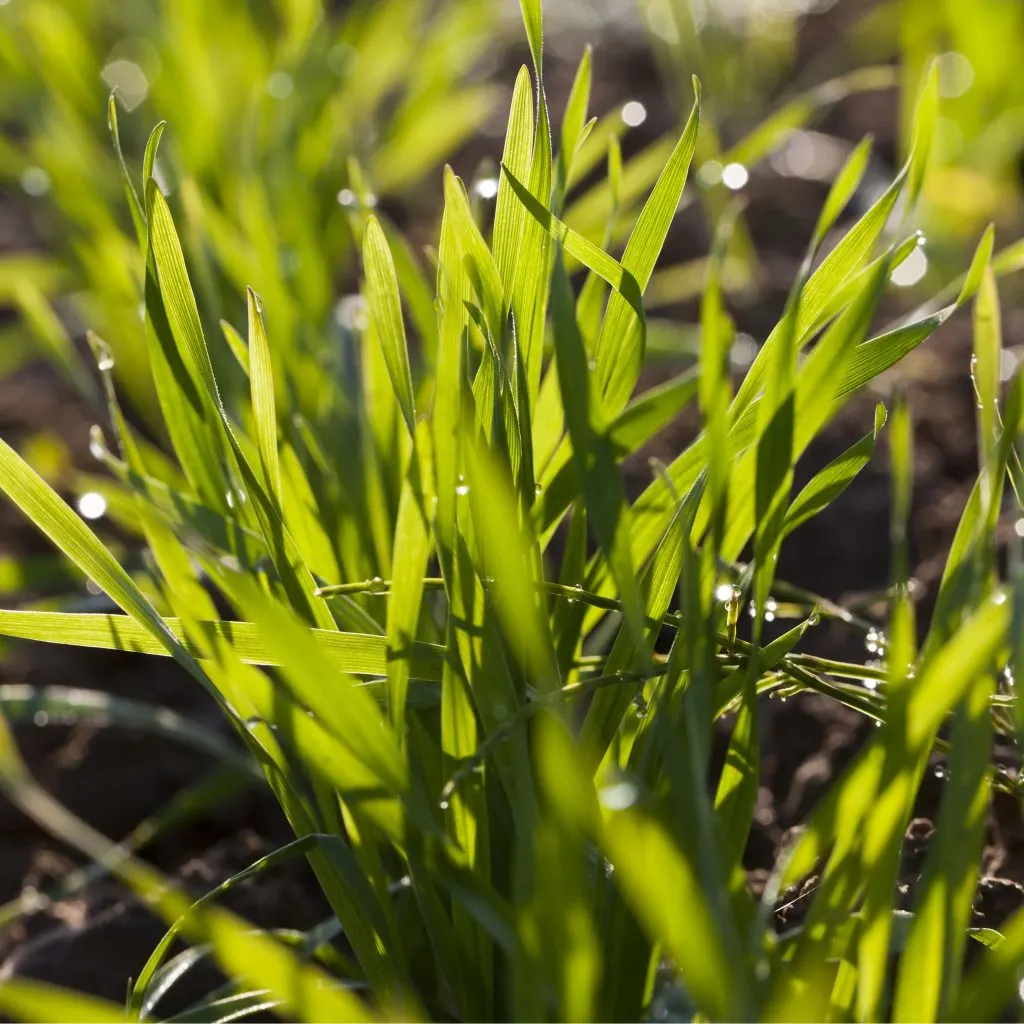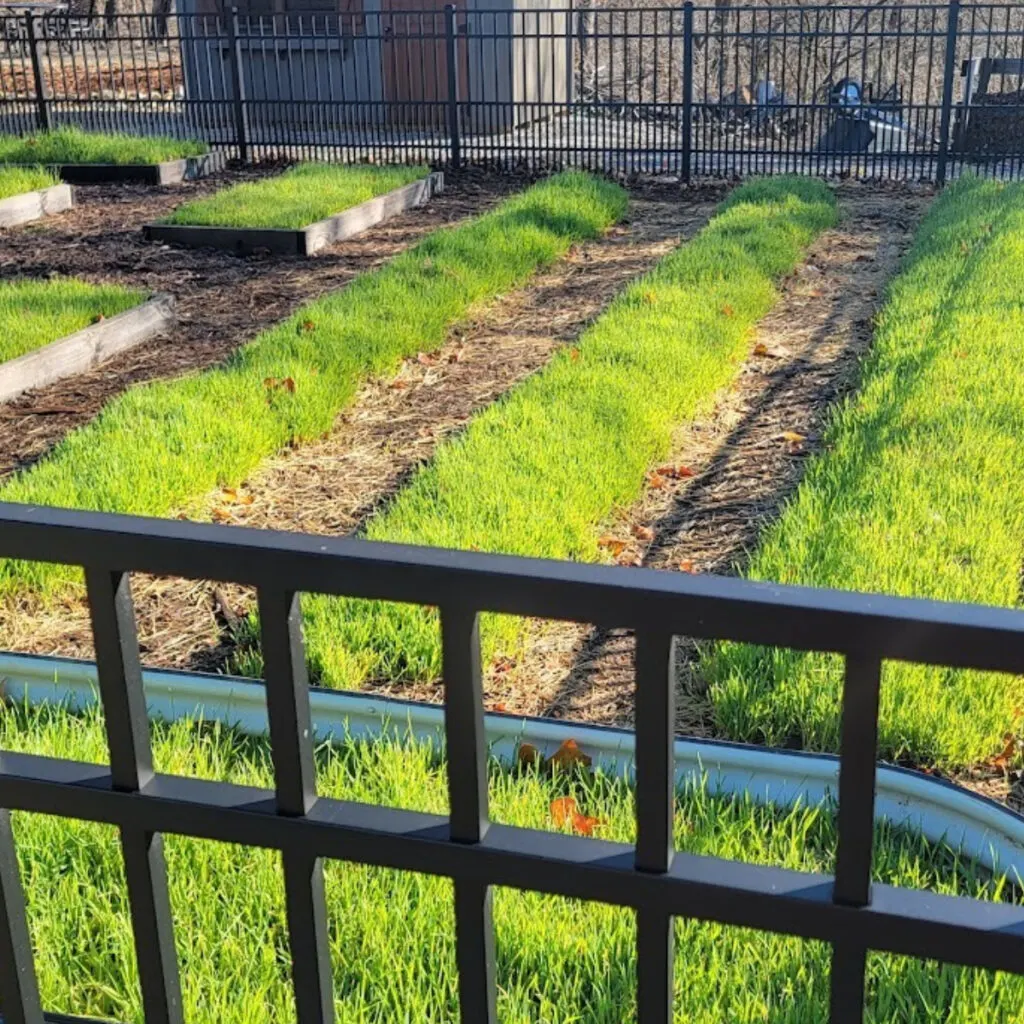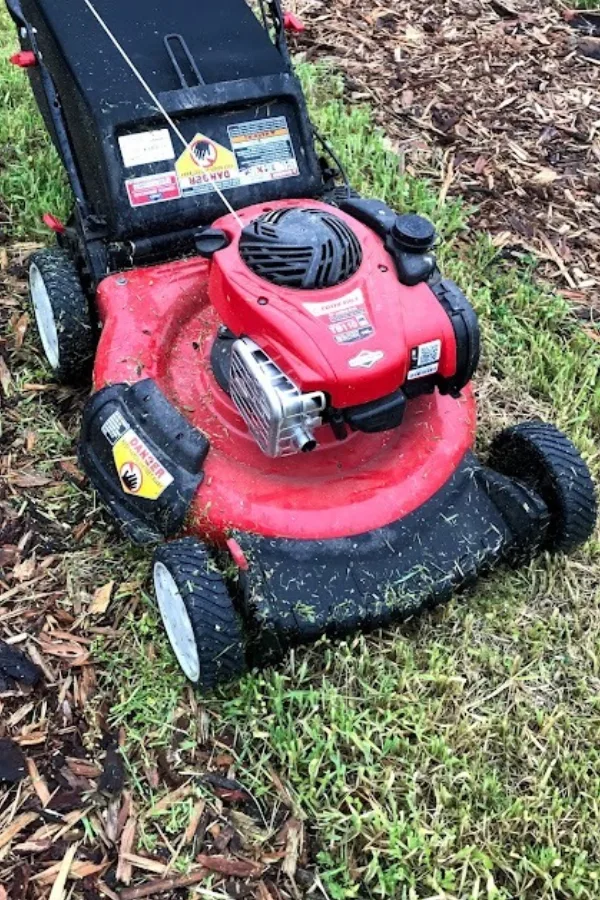Plain and simple – there is no better way to re-energize your garden soil and all but eliminate next year’s weeds than to plant a fall cover crop in your garden this year!
Without a doubt, planting a fall cover crop has been the difference maker in our garden’s fertility and success year after year. Every fall, as our summer garden plants begins to fade, we plant both our growing rows and even our raised bed areas with a thick cover crop of either annual rye or oats.
Not only is it one of the easiest garden chores to perform, it also happens to be one of the most valuable crops we grow. Cover crops germinate fast in the warm, fall soil. And they quickly fill our garden’s soil with a lush and protective layer that helps a garden and the gardener in more ways than you would ever think.

For starters, a cover crop protects your garden from losing valuable soil. When left bare, the soil in a garden can quickly erode away from late fall and winter rains, sleet and snow.
But even more, as a cover crop thickens, it snuffs out weeds that usually start to appear and take over the garden soil in the fall. Weeds that then produce even more seeds to lie in wait to sprout and become next year’s never ending weeding nightmare!
Recharging The Soil – Why To Plant A Fall Cover Crop In Your Garden
As great as it can be to nearly eliminate weeds with a cover crop, perhaps best of all, that same cover crop is incredible for rejuvenating and revitalizing your garden’s tired soil.
A garden loses a tremendous amount of nutrients each growing season as it gives its energy to growing vegetable plants. And if that energy isn’t replaced, next year’s garden will ultimately suffer. But that is exactly where a cover crop can save the day.

Cover crops such as annual rye, oats or even field peas act as the ultimate organic fertilizer for the garden. First, their roots drive deep through the soil, loosening and aerating the dirt as they expand. Then, early next spring, as the cover crop dies off and the foliage and roots break down, it adds valuable nutrients and organic matter to the soil. In the case of field peas, it even helps to fix nitrogen levels!
In the end, it leaves your garden refreshed, recharged and weed free. Even better, the soil is then more than ready to power new crops. But, as you will see below, if you happen to grow a no-till cover crop, you can simply let it die back and then plant right through it next spring. Talk about making gardening easy!
How & Why To Plant A Fall Cover Crop In Your Garden
Planting a fall cover crop couldn’t be easier. There is no need to till prior to planting. Actually, there is no need for any hard labor at all! Simply start by raking lightly to stir up the soil surface. Next, cast your seeds over the bare soil much like you would plant grass seed.
As for how much seed to sow, we scatter about 1/2 to 1 pound of annual (cereal) rye, oat seed or oats and field pea seed for every 40 square feet of garden space. We like using these crops as our cover crops because there is never a need to till them after they are planted. (More on that later in the article)
To finish, simply lightly rake the soil to set the seeds for germinating. There is no need to fully cover the seed. Just lay a light 1/2 inch layer of straw on top to help keep in moisture and better allow the seeds to germinate.
Within 7 to 10 days, your fall cover crop will sprout and come to life. And you will be well on your way to protecting and energizing your soil for a great garden next year!

Caring For Your Cover Crop In The Spring – How & Why To Plant A Fall Cover Crop In Your Garden
One of the best benefits of planting a fall cover crop of oats, field peas or annual rye in your garden is that there is absolutely no need to till it in next spring. Not having to till your garden is more than just a time and labor saver. It also actually helps keep soil healthier and stronger.
- Affiliate Seed Link: Oats & Peas Cover Crop Seed
- Affiliate Seed Link: Annual (Cereal Rye) Cover Crop Seed
Too much tilling can lead to poor soil structure. It also can wreak havoc on the populations of earthworms and beneficial organisms that lie below the surface.
But more than anything, by not tilling, it will cut your weeding chores to near zero. Every time garden soil is turned over, the weed seeds on top are getting replanted. But if you don’t disturb the soil, those weed seeds will never find a home to germinate.

Planting In The Spring – How & Why To Plant A Fall Cover Crop
When planting annual rye, field peas or oats, you can simply mow the crops down a few times in the spring until they die off. And then, easily plant right through the undisturbed surface below!
For transplant crops, we use a post hole digger to quickly create our planting holes. For seed crops, we use a mattock or pick to create rows. Drawing the pick end through the soil creates fast and easy planting rows. All without disturbing the soil around to allow weed seeds to find a home.
By using the no-till method, it means there is no messing around with a rototiller or garden plow. In addition, there is no waiting for spring rains to stop so you can work the soil. And more importantly, it means not disturbing the dirt in the garden to allow new weed seeds to find a home. All in all, it allows you to create the ultimate low-maintenance, high-powered garden!
Here is to making this the year you power up your garden with a cover crop. And in the process, have your best garden ever next year! For even more tips on powering up your garden soil after the season is over, see our article: 3 Easy Ways To Recharge Your Garden Soil In The Fall – Give New Life To Tired Soil! Happy Gardening – Jim and Mary.
Old World Garden
Jim and Mary Competti have been writing gardening, DIY and recipe articles and books for over 15 years from their 46 acre Ohio farm. The two are frequent speakers on all things gardening and love to travel in their spare time.
As always, feel free to email us at thefarm@owgarden.com with comments, questions, or to simply say hello! You can sign up for our free email list in the subscribe now box in the middle of this article. Follow us on Facebook here : OWG Facebook. This article may contain affiliate links.
